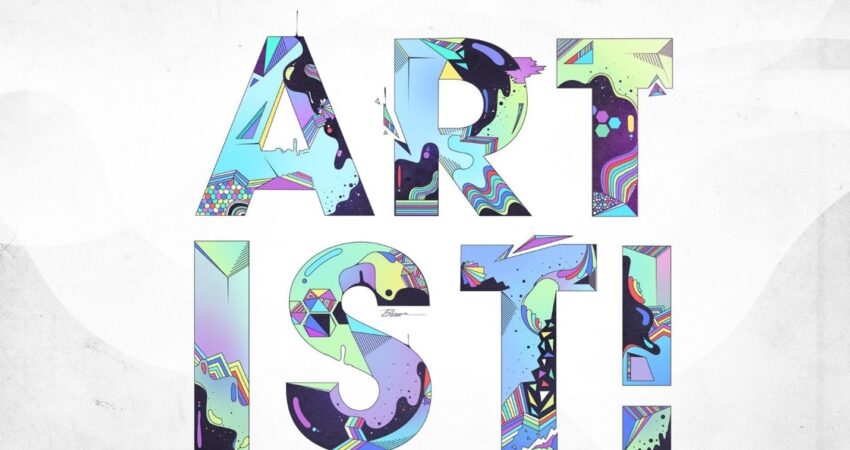
Logos are a powerful tool in branding, encapsulating the essence of a business or organization in a visual representation. Two primary styles of logos, illustrative and typographic, offer distinct approaches to conveying messages, values, and identity. In this article, we’ll delve into the world of these logos, exploring their unique features, benefits, and best practices for effective implementation.
Understanding Illustrative Logos
The Art of Storytelling
Illustrative logos bring stories to life through images. They can tell intricate tales about the brand’s history, culture, or mission in a single visual element. An illustrative logo design engages viewers, leaving a lasting impression that resonates with their emotions.
Evoking Emotions through Imagery
Visual elements evoke emotions more powerfully than words alone. Illustrative logos capitalize on this by using imagery that strikes a chord with the audience. From playful to serious, the choice of imagery influences the emotional response a logo generates.
Versatility in Various Mediums
Illustrative logos, when thoughtfully designed, maintain their impact across diverse mediums. Whether on a website, a product label, or a billboard, the logo’s visual storytelling remains consistent, reinforcing brand recognition.
The Power of Typographic Logos
Typography as an Expression
Typographic logos focus on font styles and arrangements to convey messages. The typeface itself becomes an art form, reflecting the brand’s personality and style. A single word can express depth, simplicity, elegance, or innovation.
Minimalism and Impact
In a world cluttered with visual stimuli, a typographic logo‘s simplicity stands out. Minimalistic typography offers clarity and memorability, making a strong and concise statement.
Typography in Various Industries
Typography plays a crucial role in various industries, from fashion to technology. Each sector can leverage specific font styles to reinforce their brand’s message. For instance, a luxury brand may opt for elegant, cursive fonts, while a tech company might choose sleek, modern typography.
Choosing the Right Style for Your Brand
Aligning your logo style with your brand’s personality is crucial. Let’s delve into the factors that guide this decision:
Aligning with Your Brand’s Personality
Your logo should reflect your brand’s character. An illustrative logo suits a brand with a vivid story to share, while a typographic logo is ideal for conveying a brand’s essence through elegant fonts.
Considering Your Target Audience
Understanding your audience’s preferences is vital. An illustrative logo may resonate with a younger audience, while a more mature demographic might appreciate the sophistication of typographic logo designs.
Reflecting Your Brand’s Values
Every brand stands for something. An illustrative logo can embody values like creativity and innovation, while a typographic logo may symbolize simplicity and professionalism.
In the upcoming sections, we’ll walk you through the creative process of designing illustrative logos and crafting impactful typographic logos. Remember that creating a compelling logo involves more than just design—it’s about capturing the spirit of your brand.
The Creative Process of Designing Illustrative Logos
The process of creating an illustrative logo is a blend of art and strategy. Let’s explore the steps involved:
Brainstorming and Conceptualization
The journey begins with brainstorming ideas that align with the brand’s identity. What symbols, images, or metaphors can represent your brand effectively? Collaborate with your team to generate a pool of concepts.
Sketching and Digital Rendering
From the pool of concepts, move on to sketching. Translate your ideas into rough sketches, allowing you to visualize the potential logo. Once a concept is selected, digitize the sketch using graphic design tools for a more refined representation.
Feedback and Iteration
Gather feedback from stakeholders and designers. Constructive criticism refines the logo further. Each iteration hones in on the logo’s message, ensuring it resonates with your target audience.
Crafting Compelling Typographic Logos
Typography transforms letters into meaningful messages. Let’s uncover the process of creating impactful typography logo designs:
Font Selection and Customization
Select a font that aligns with your brand’s personality. Experiment with different typefaces—serif, sans-serif, script, etc. Additionally, customize the chosen font to add a unique touch to your logo.
Incorporating Symbolism in Typography
Typography can carry hidden meanings. Integrate subtle symbols or imagery into the typography itself. These symbols can resonate with your audience and convey layers of meaning.
Balancing Text and Visual Elements
A typographic logo often integrates text and visual elements harmoniously. The way text interacts with these elements impacts the logo’s overall visual balance. Strive for a composition that is visually pleasing and emotionally evocative.
In the following sections, we’ll explore the psychological impact of visual logos and the process of combining illustration and typography.
The Psychological Impact of Visual Logos
Visuals have a profound impact on human psychology. Let’s delve into how visual logos affect brand perception:
Building Trust and Recognition
Consistent visual representation builds trust over time. When customers repeatedly encounter a logo that embodies the brand’s values, it creates a sense of reliability and familiarity.
Forming Emotional Connections
Visual logos can tap into emotions, forming strong connections with audiences. An illustrative logo that resonates with a customer’s values can evoke feelings of loyalty and attachment.
Establishing Brand Loyalty
A well-designed logo contributes to brand loyalty. When customers identify with a brand’s logo, they become more likely to choose that brand over competitors.
In the upcoming sections, we’ll discuss combining illustration and typography and how to implement your logo consistently across various platforms.
Combining Illustration and Typography
Why choose between illustration and typography when you can have the best of both worlds? Let’s explore the art of combining these two logo styles:
Harmonizing Contrasting Elements
The challenge lies in harmonizing the visual intricacy of illustration with the simplicity of typography. A balanced composition creates a logo that is visually engaging yet delivers a clear message.
Case Studies of Successful Logos
Looking at real-world examples can provide invaluable insights. We’ll explore case studies of brands that have effectively combined illustration and typography to create memorable logos.
Implementing Your Logo Across Platforms
A well-designed logo is versatile. Let’s discover how to implement your logo seamlessly across various platforms:
Consistency in Branding
Maintaining a consistent logo across digital and physical mediums reinforces brand identity. Whether on a website, social media, or merchandise, your logo should be instantly recognizable.
Scalability and Adaptability
Your logo should remain clear and impactful, whether it’s scaled down on a business card or blown up on a billboard. Ensuring scalability guarantees your logo’s effectiveness in all contexts.
Flexibility in Digital and Print
Different mediums demand different color profiles and resolutions. Adapting your logo to suit both digital and print applications ensures its quality remains uncompromised.
In the final sections of this article, we’ll discuss future trends in logo design and conclude our exploration of illustrative and typographic logos.
Future Trends in Logo Design
As technology advances, so does logo design. Let’s peek into the future of logos:
Responsive and Interactive Logos
Logos that respond to user interactions offer engaging brand experiences. Interactive elements can unveil different facets of a brand, capturing user interest.
Dynamic and Animated Logos
Animation adds a new dimension to logos. Dynamic logos evolve, creating captivating narratives that resonate with audiences.
Sustainability and Social Responsibility
Future logos may embrace sustainability themes, reflecting a brand’s commitment to environmental and social causes. Ethical logos can resonate strongly with conscious consumers.
Conclusion
Logos are the visual language of brands, speaking volumes about their identity, values, and purpose. Whether you opt for an illustrative logo that tells a story or a typographic logo that conveys elegance, the design process is a journey of creativity and strategy.
As you embark on the logo design journey, remember that each stroke, curve, and choice of font contributes to a visual legacy that leaves a mark on the world.
Your Destination for Illustrative Logo Design Services in the USA
Welcome to SEOInsighterX, where creativity knows no bounds and your brand’s identity is brought to life through exceptional logo design services. Operating in the USA, we specialize in crafting illustrative logos that leave a memorable mark. Our dedicated team of skilled designers understands the power of visual communication and typography. With our typographic logo design services, we blend artistic finesse with strategic thinking, ensuring that every logo we create tells a unique story. We are committed to not just designing logos, but to capturing the essence of your brand and helping it stand out in a crowded market. Join us on this creative journey and let your brand’s personality shine through a distinctive illustrative logo designed exclusively by SEOInsighterX.









